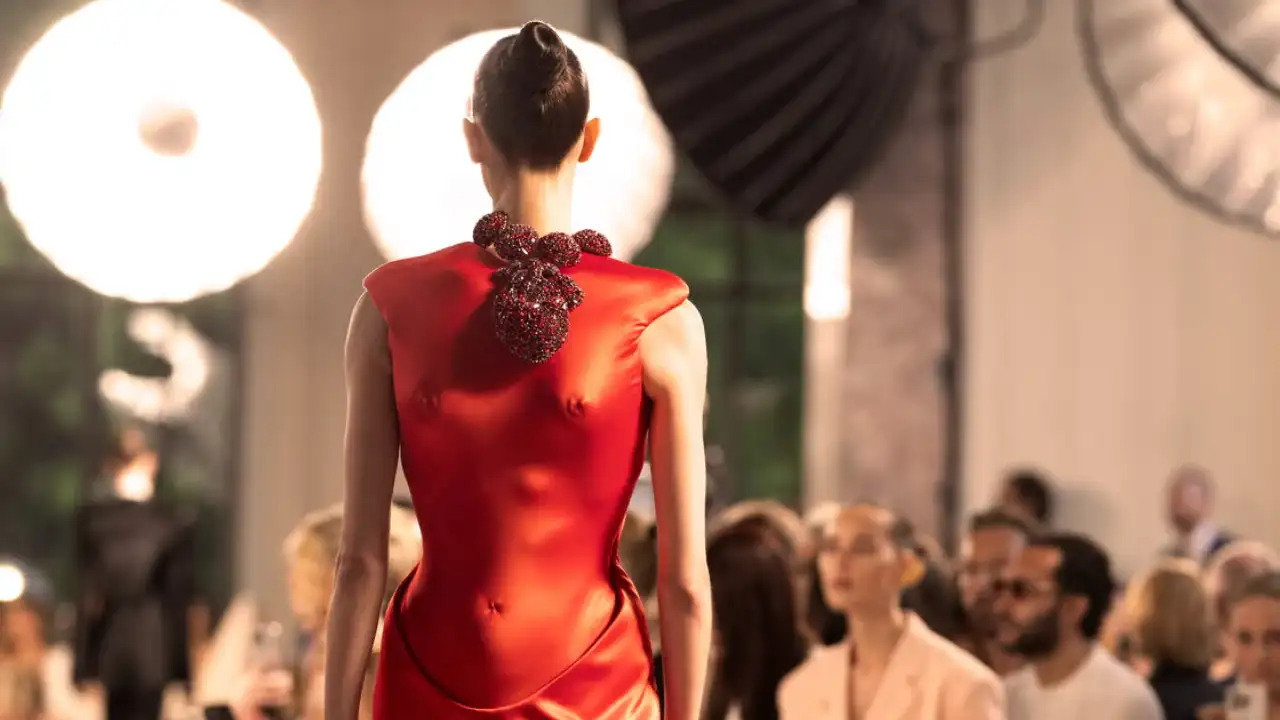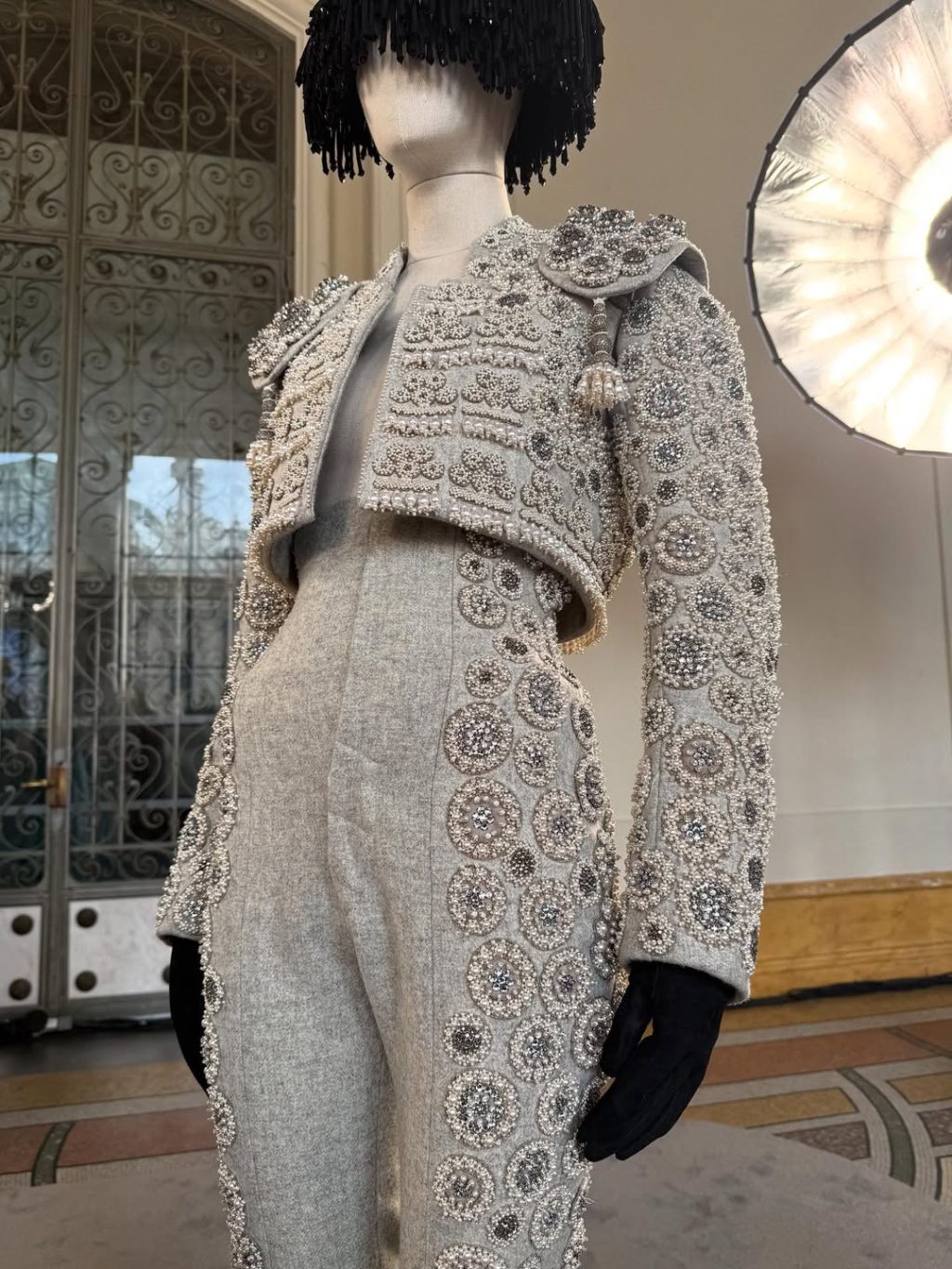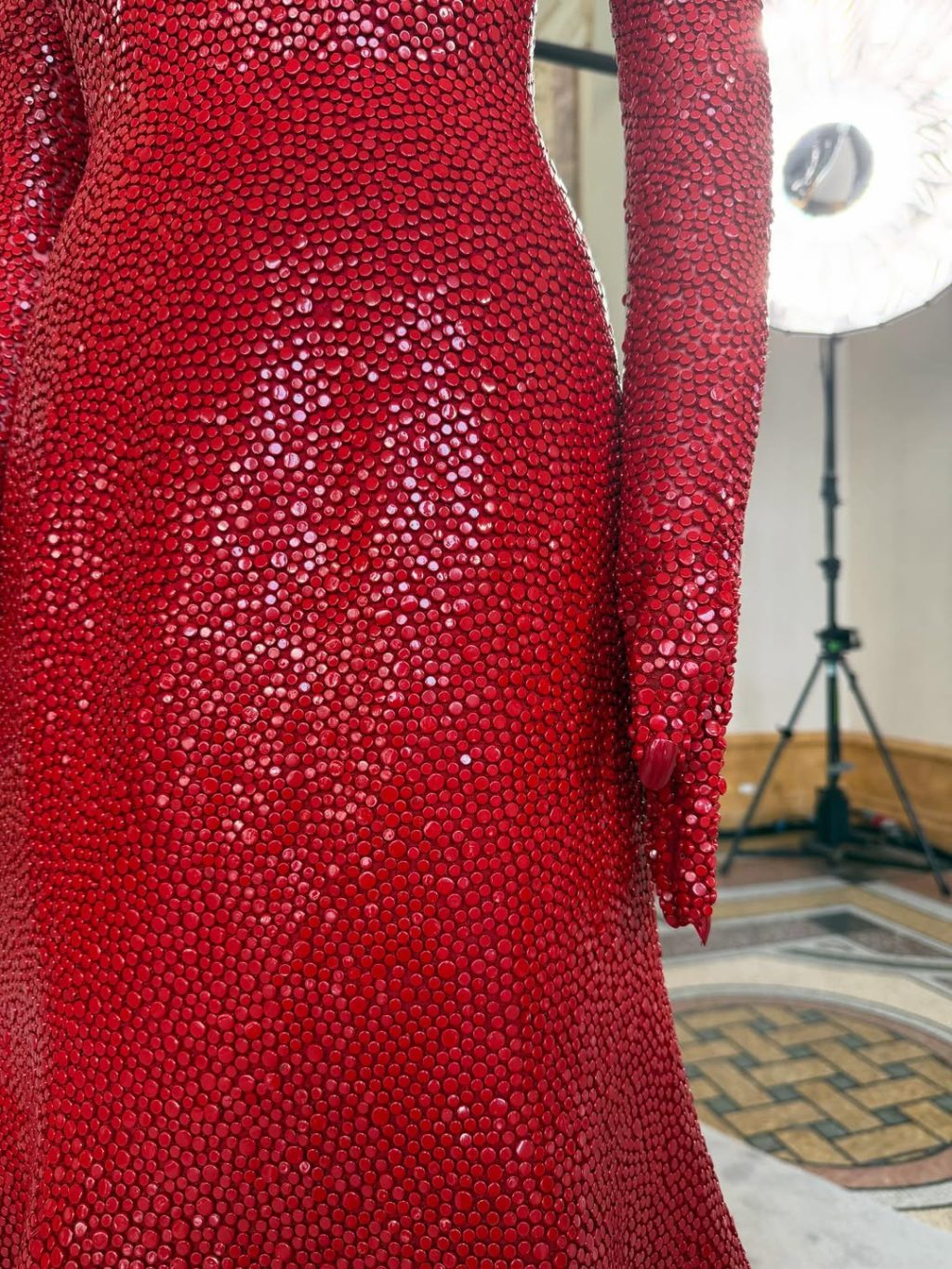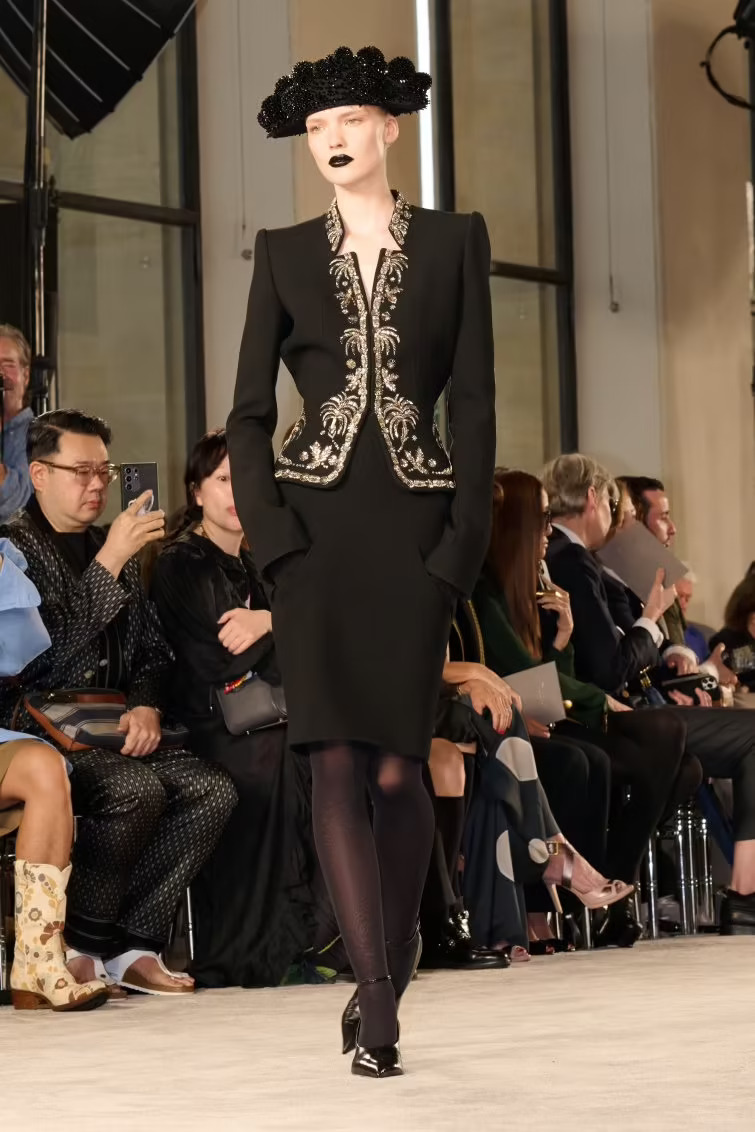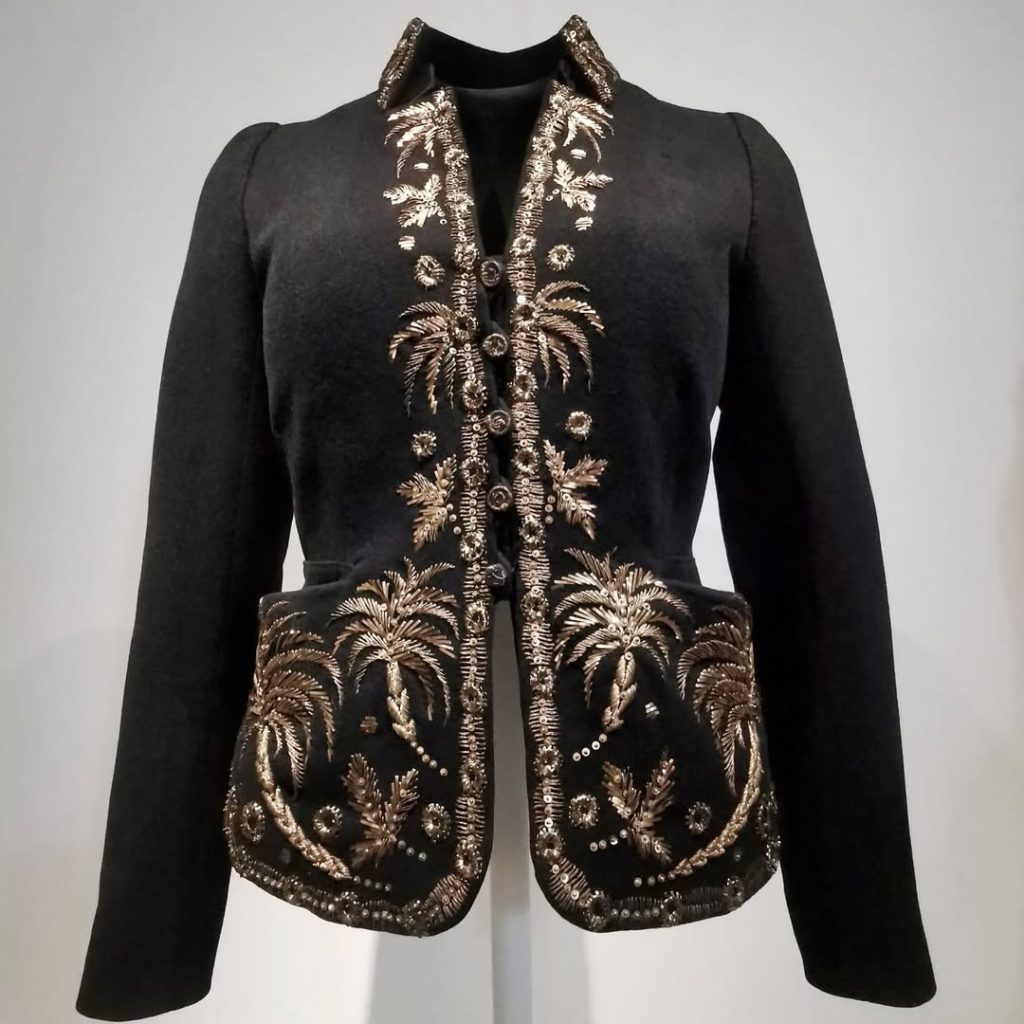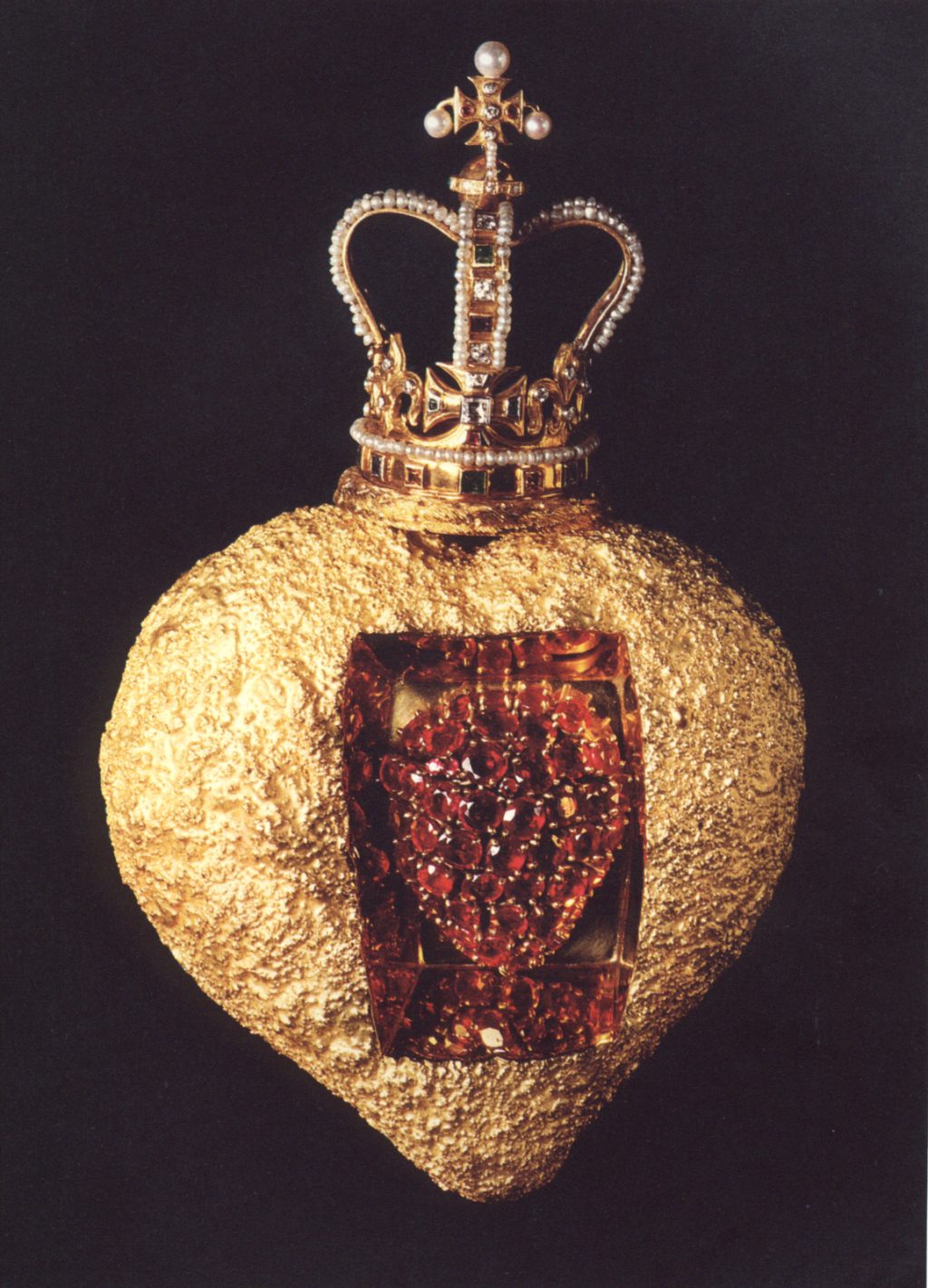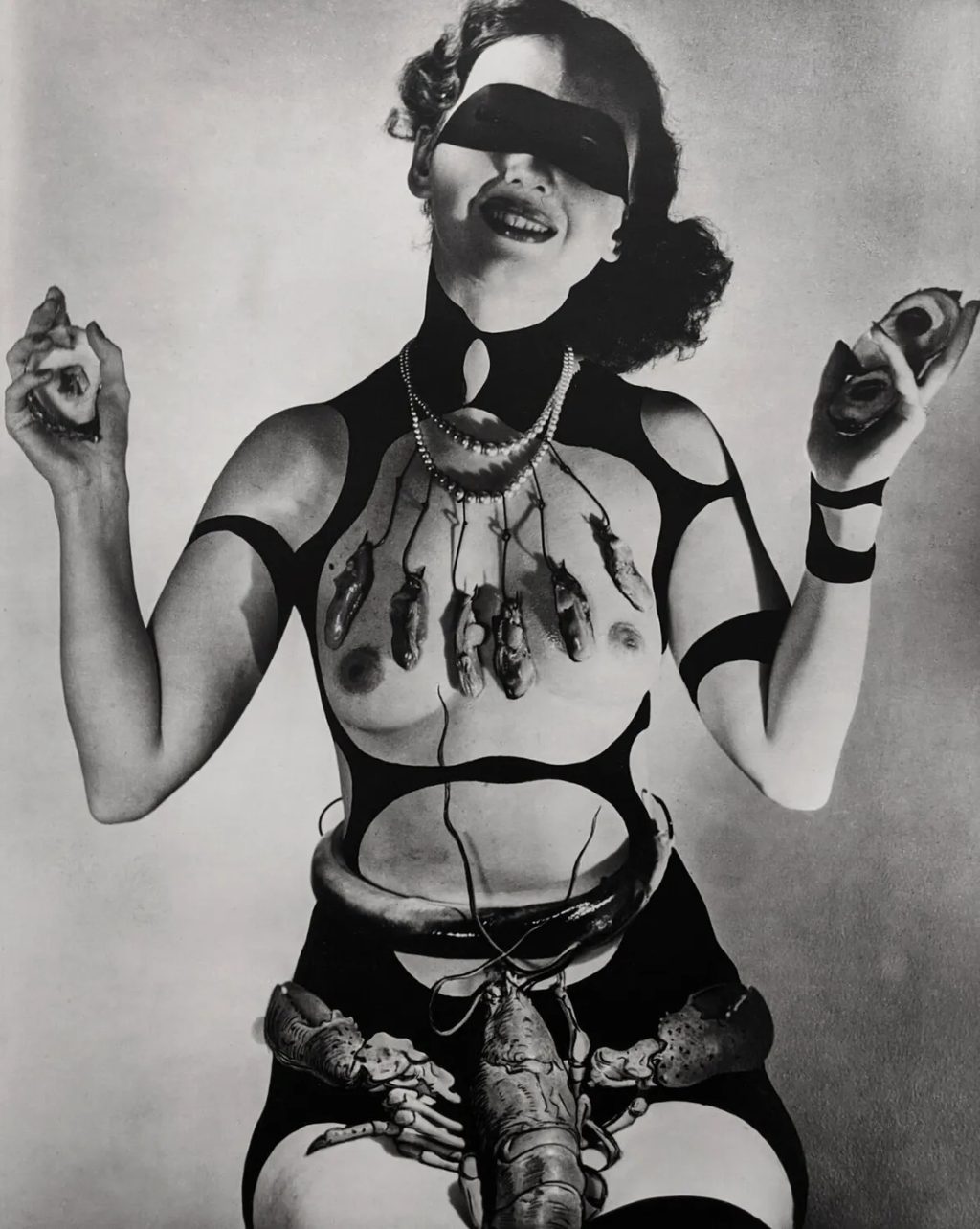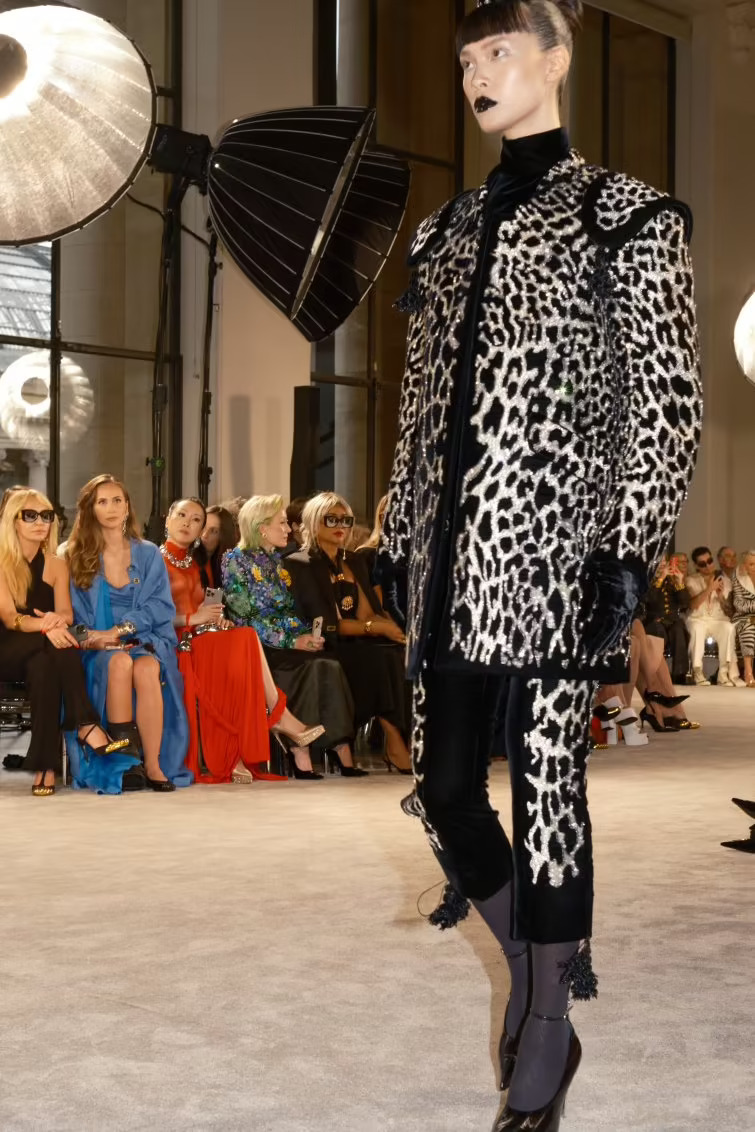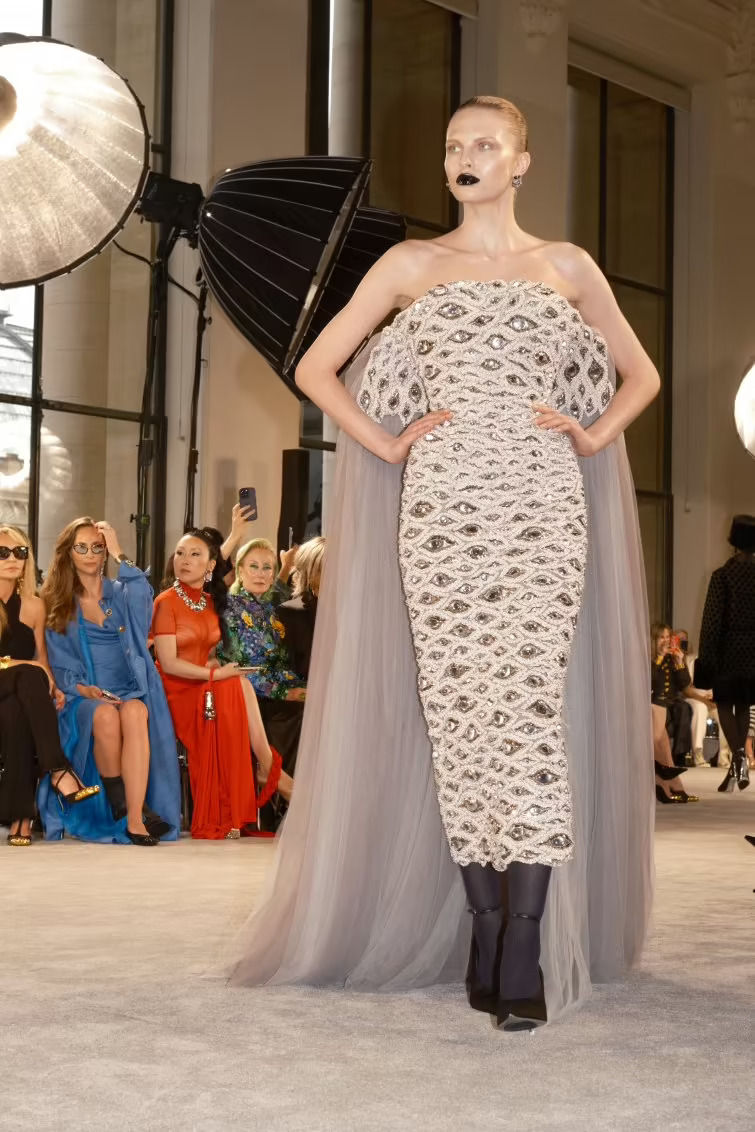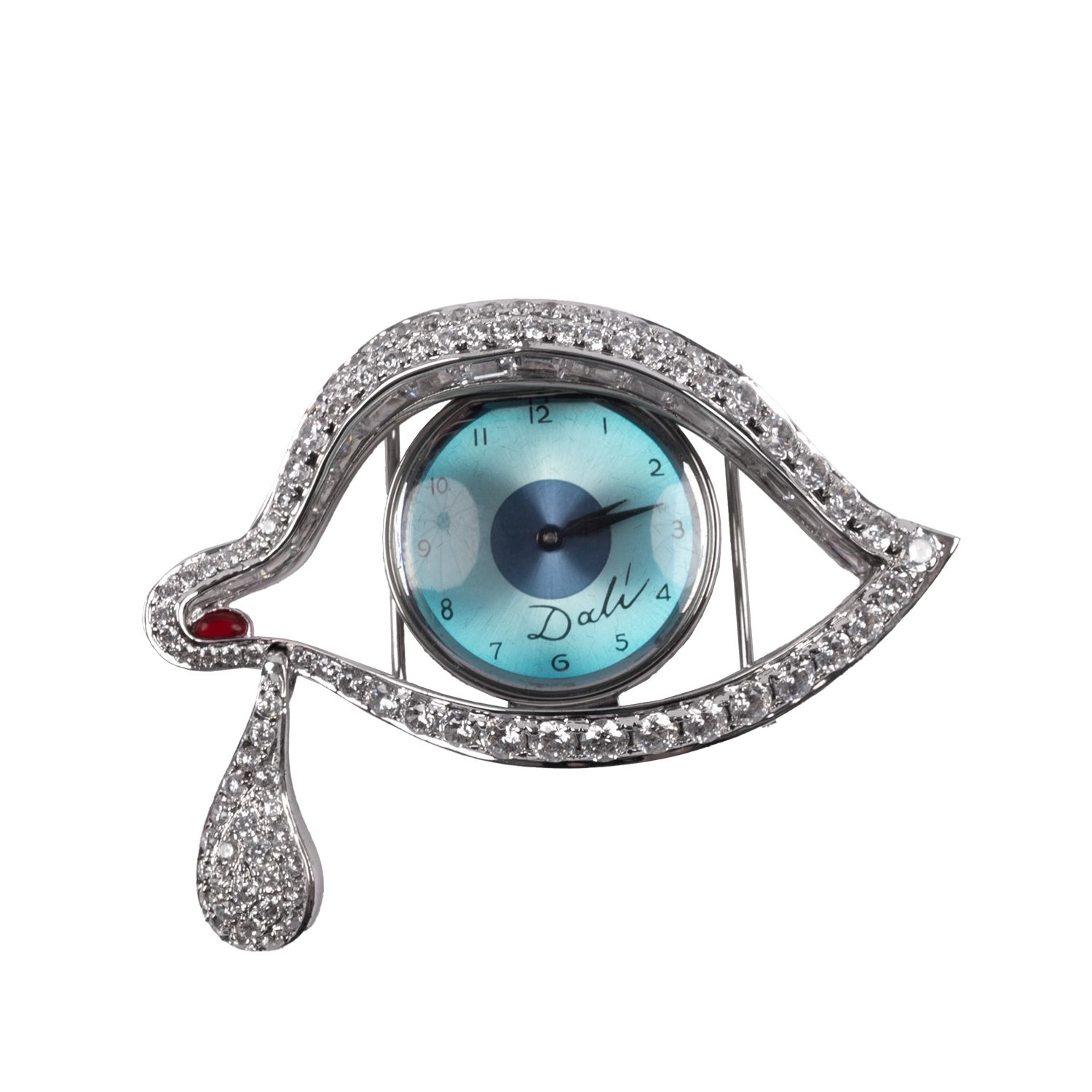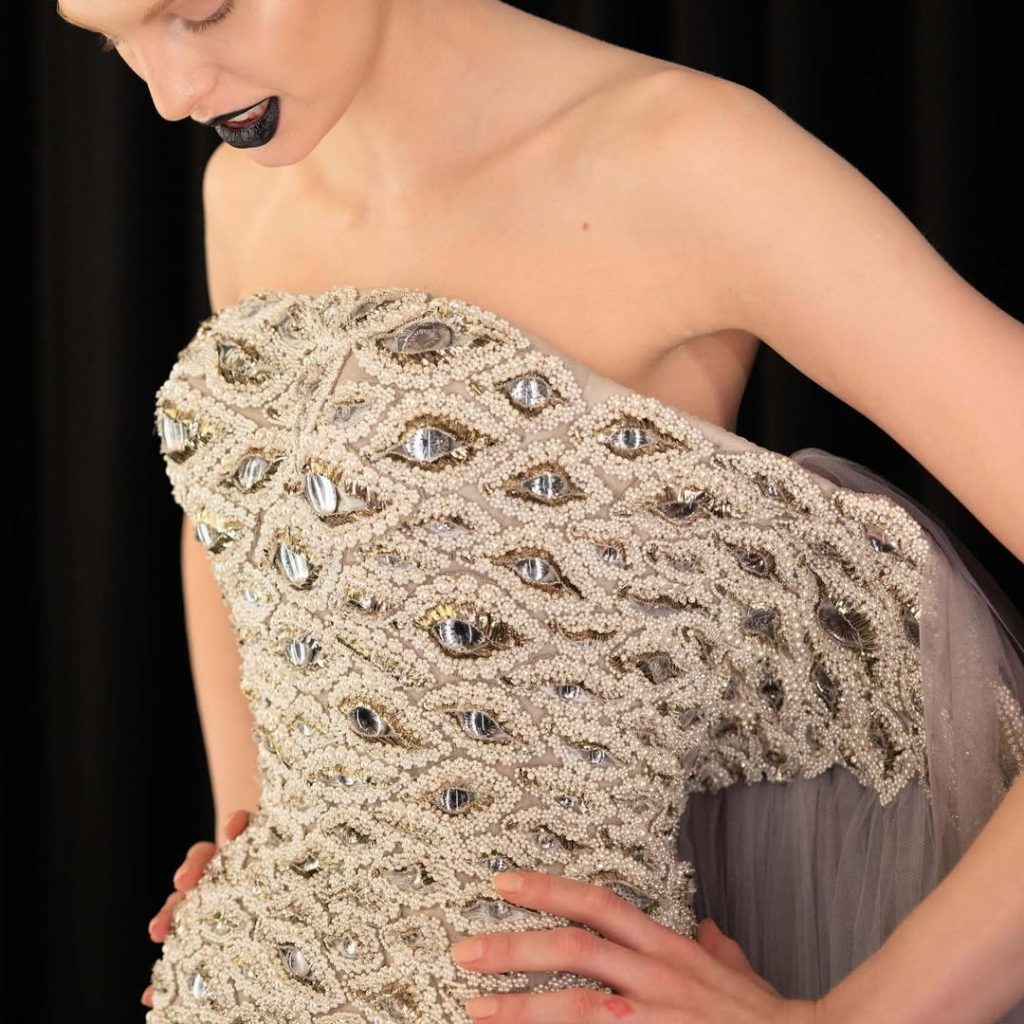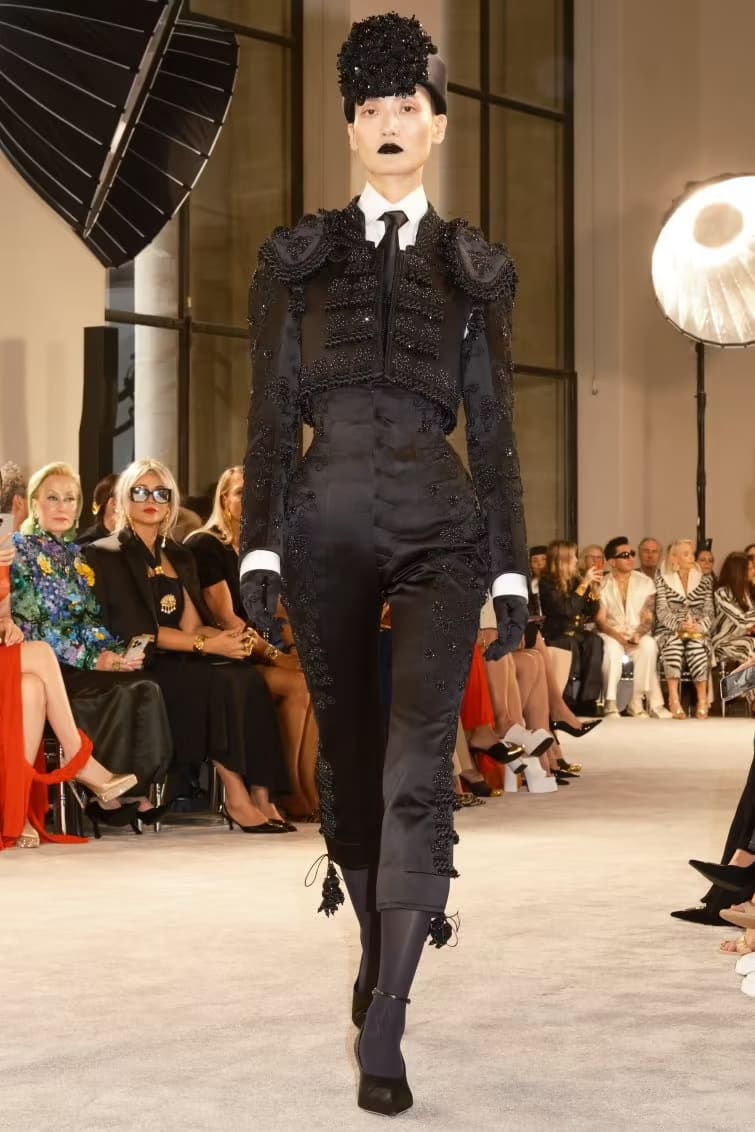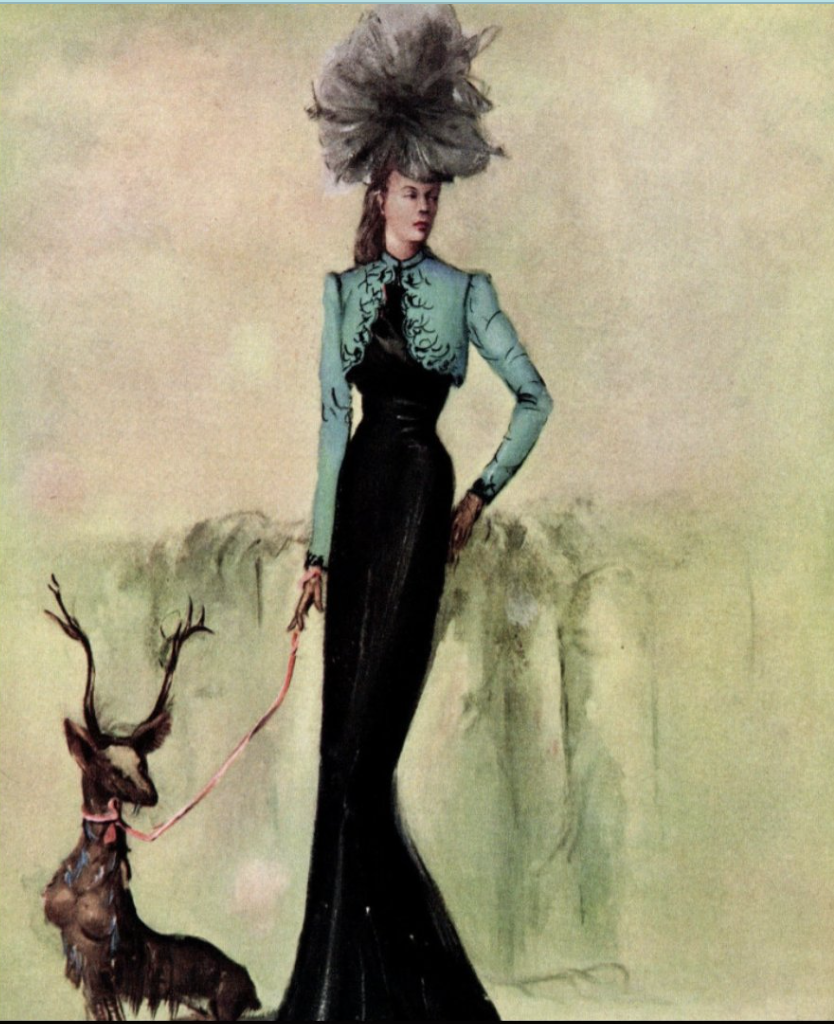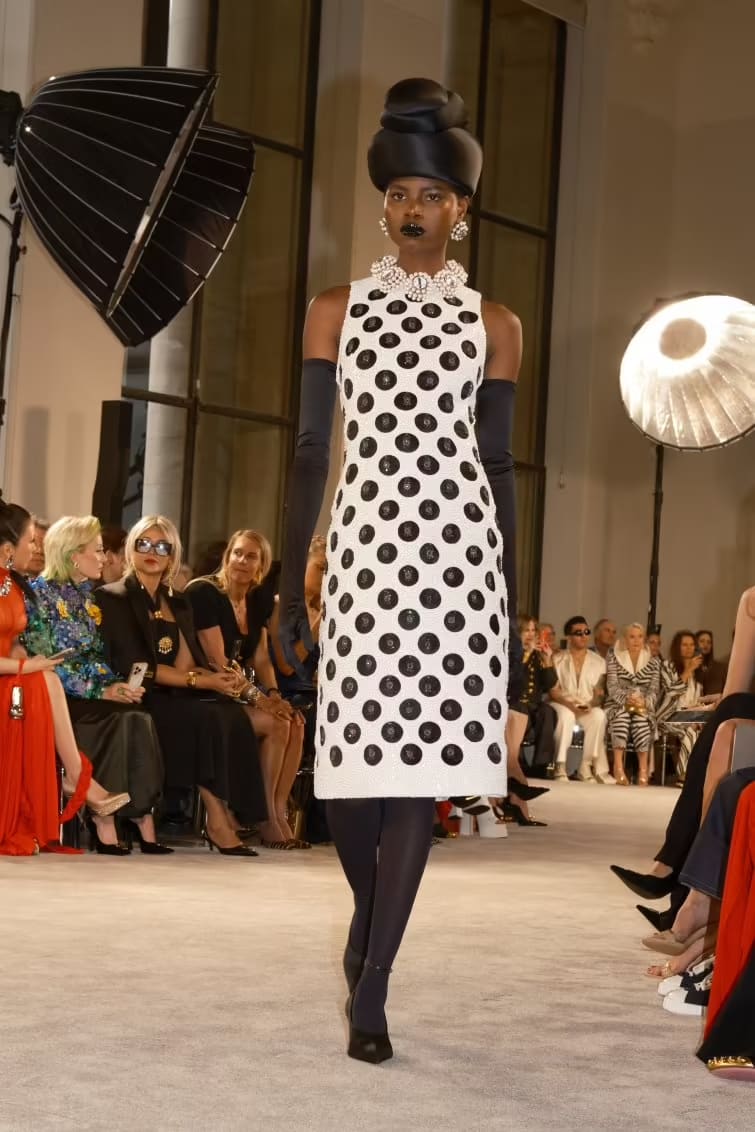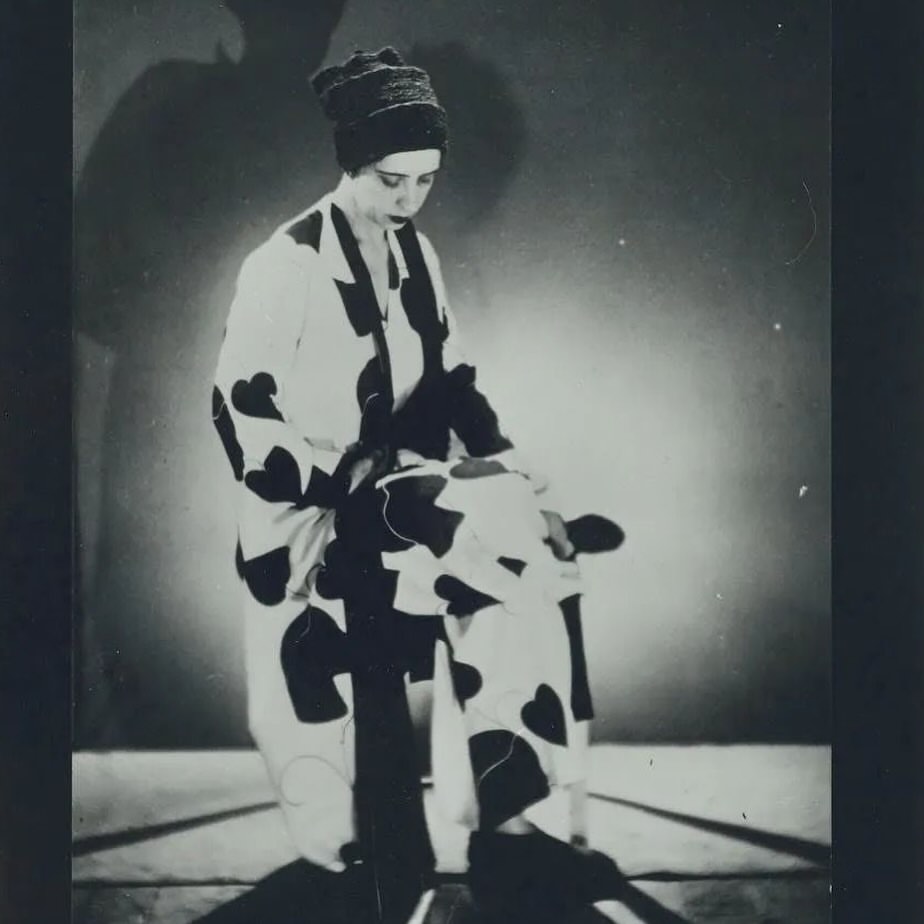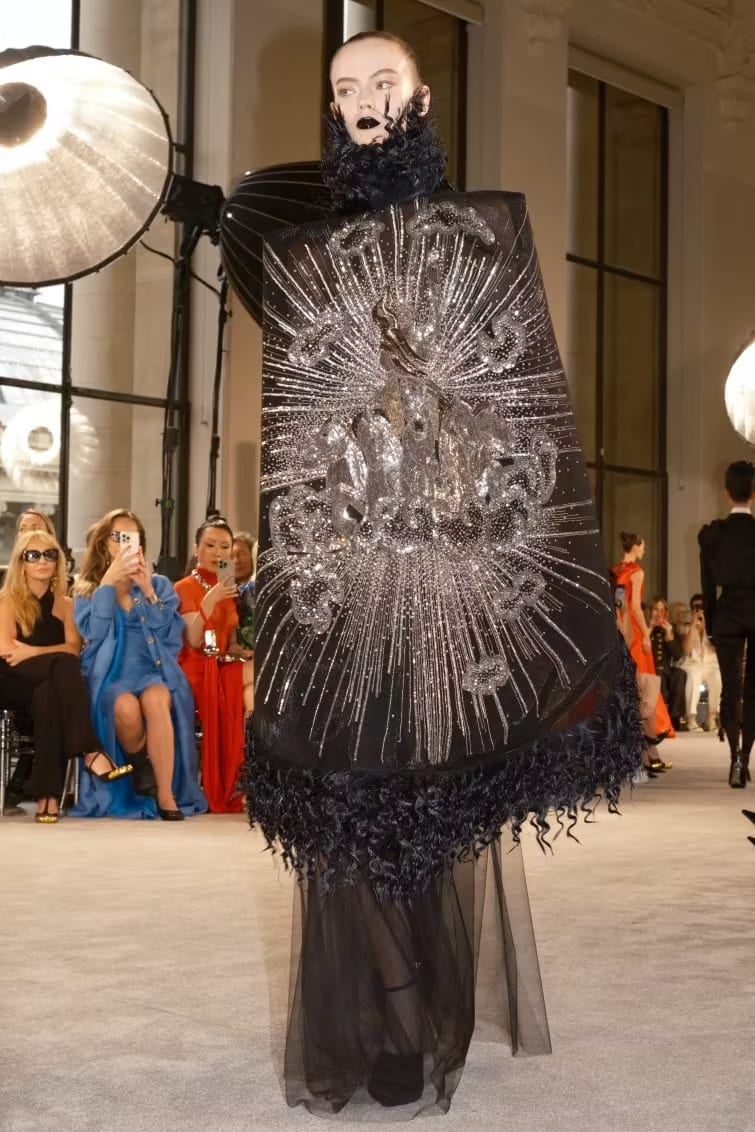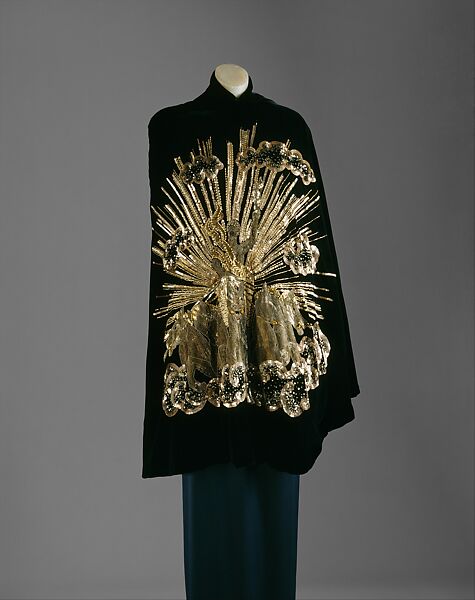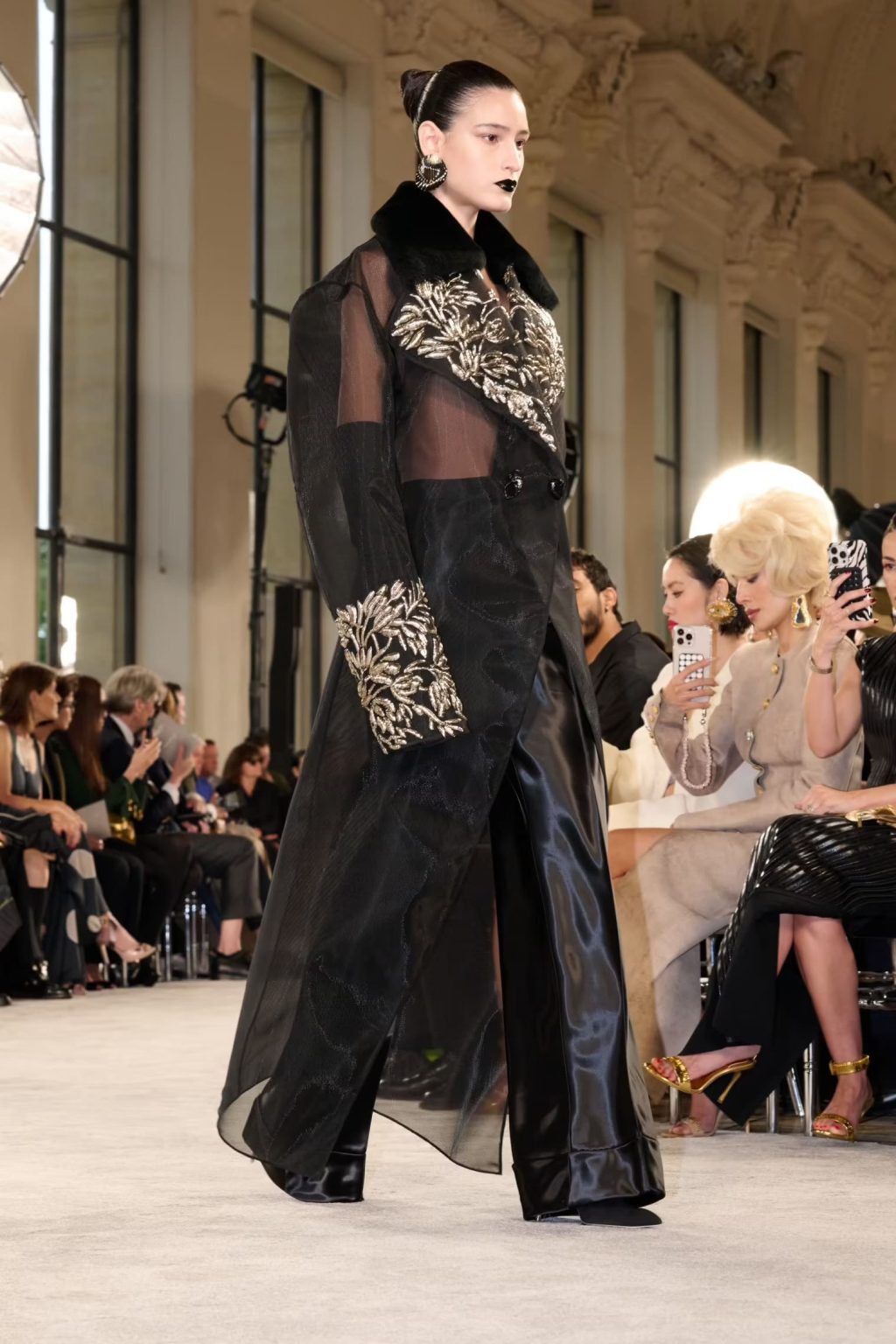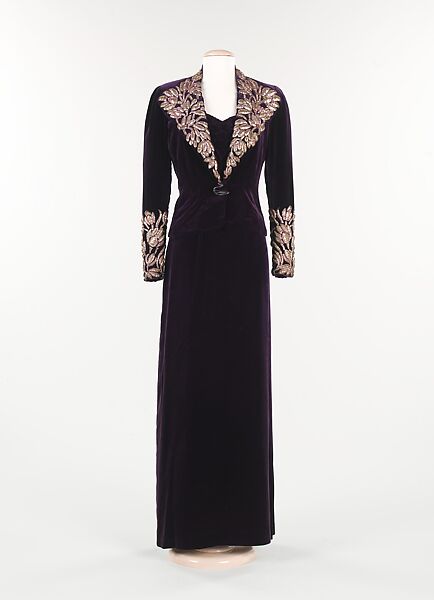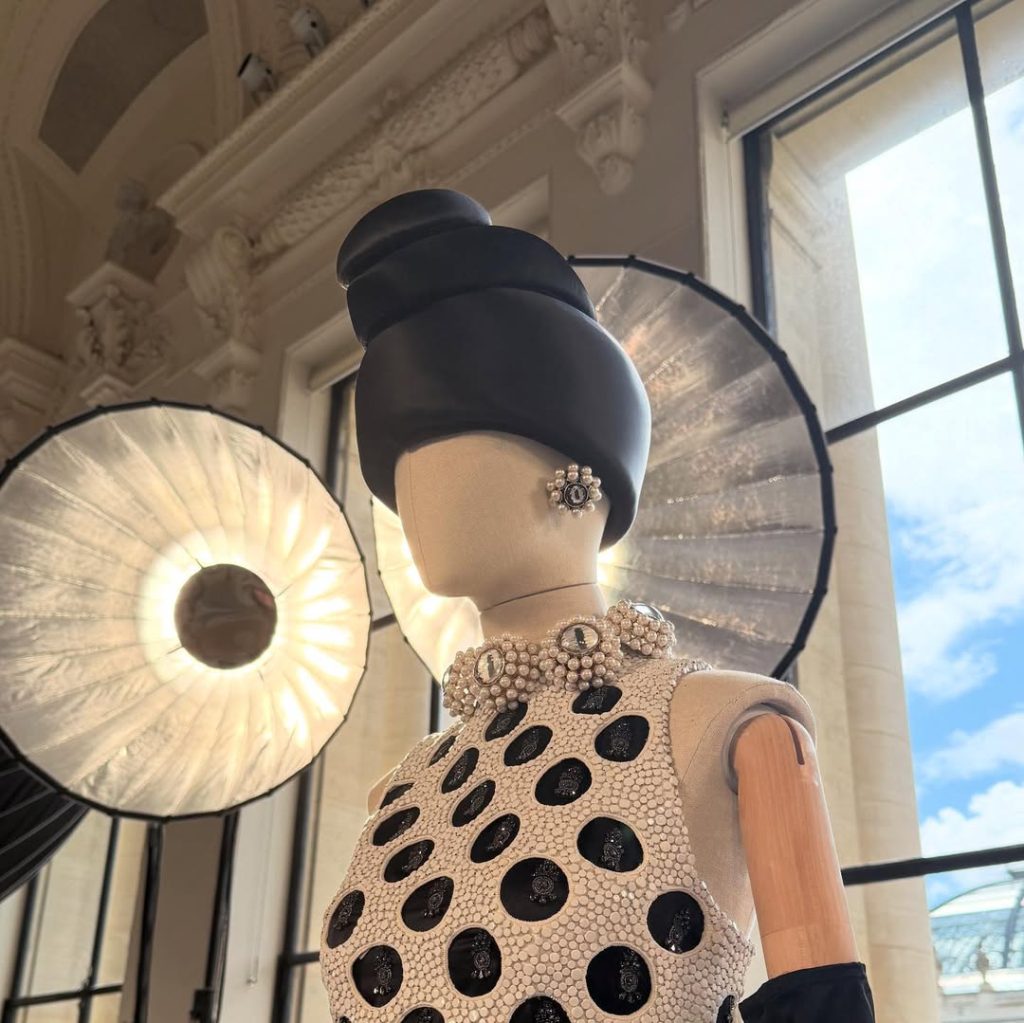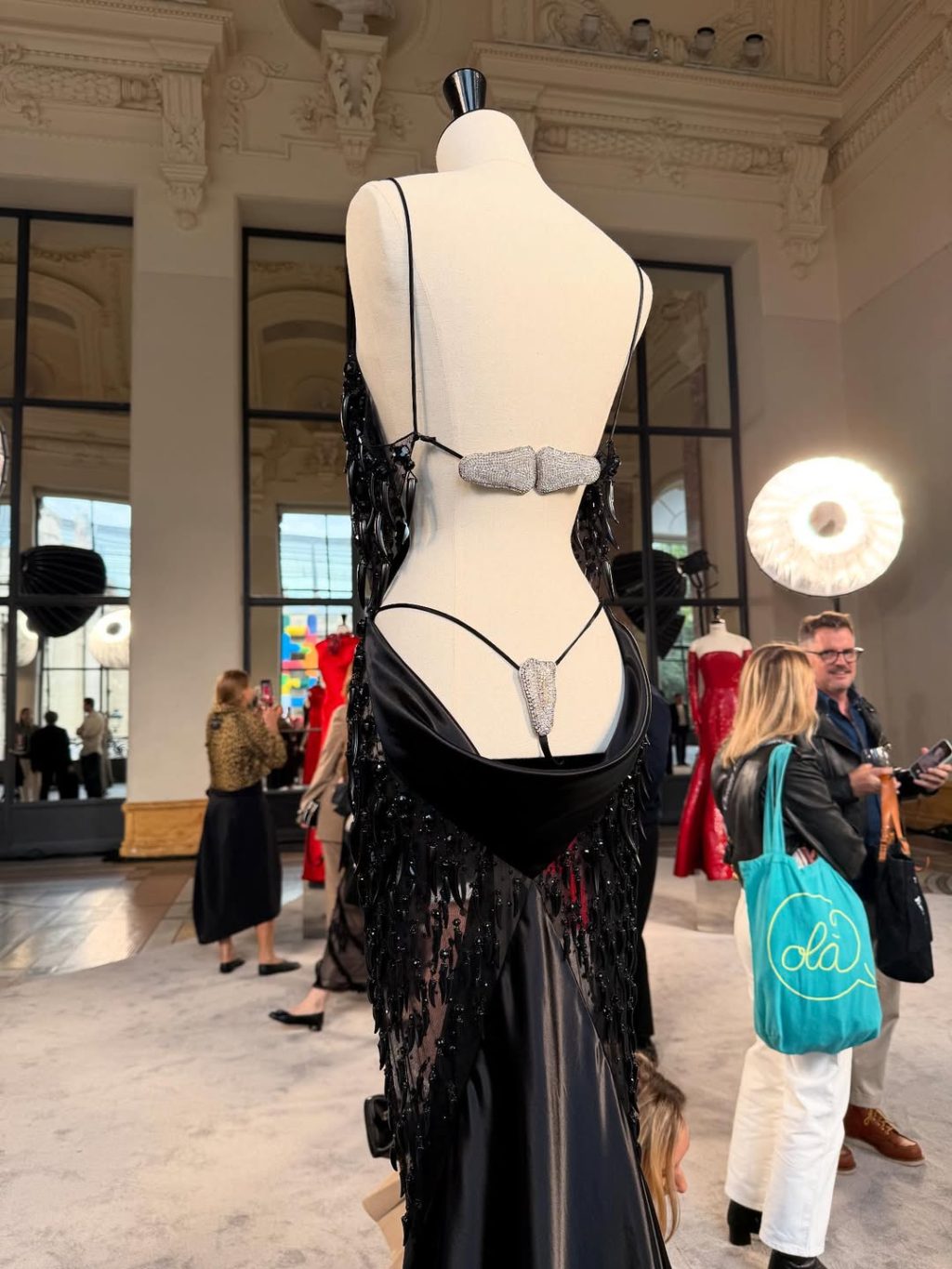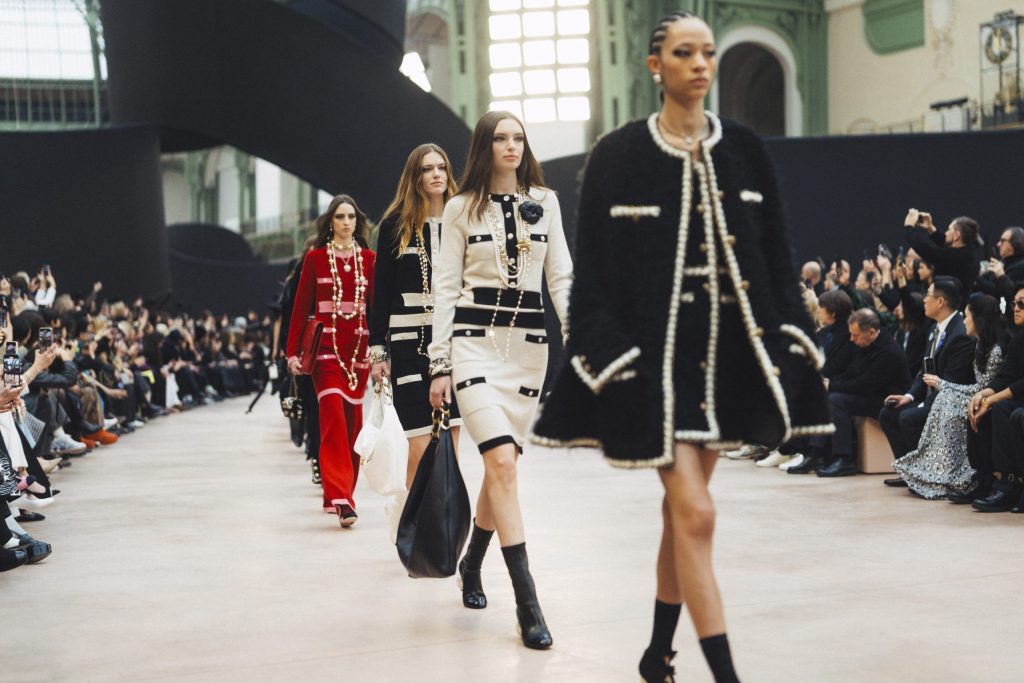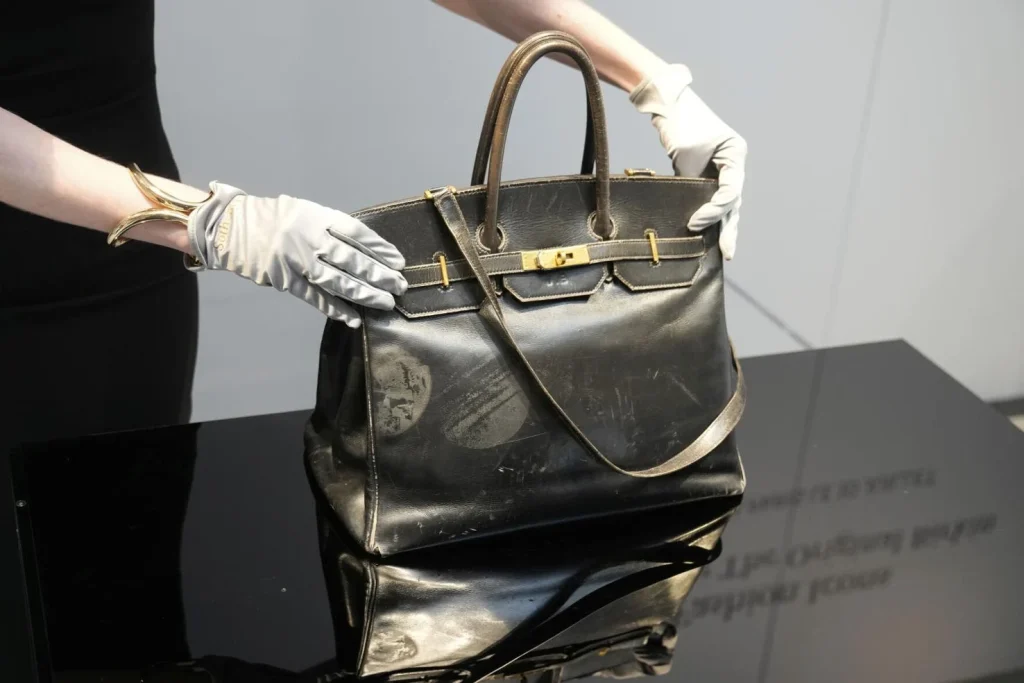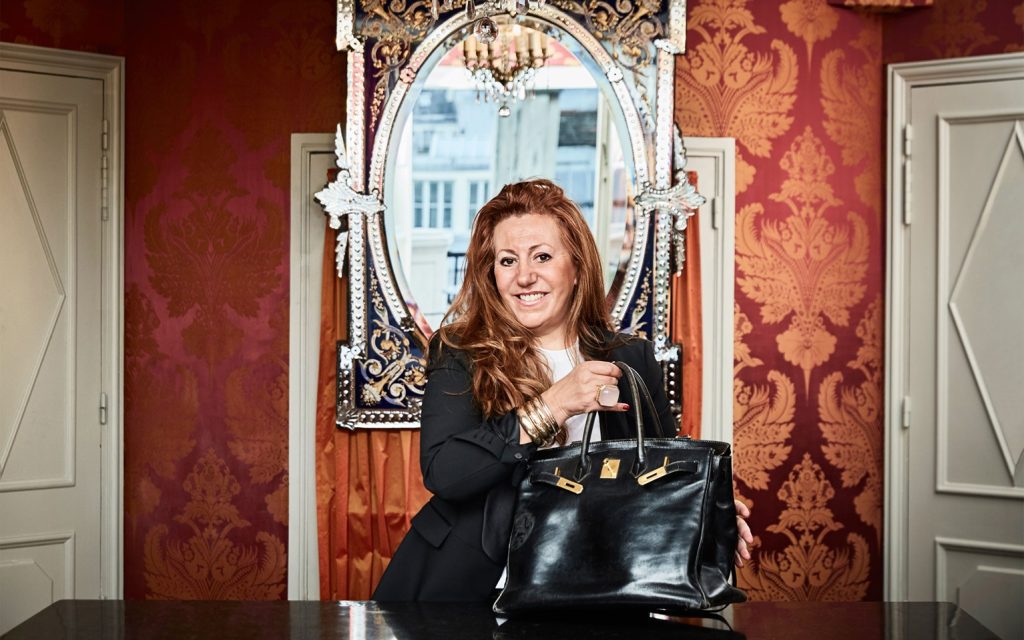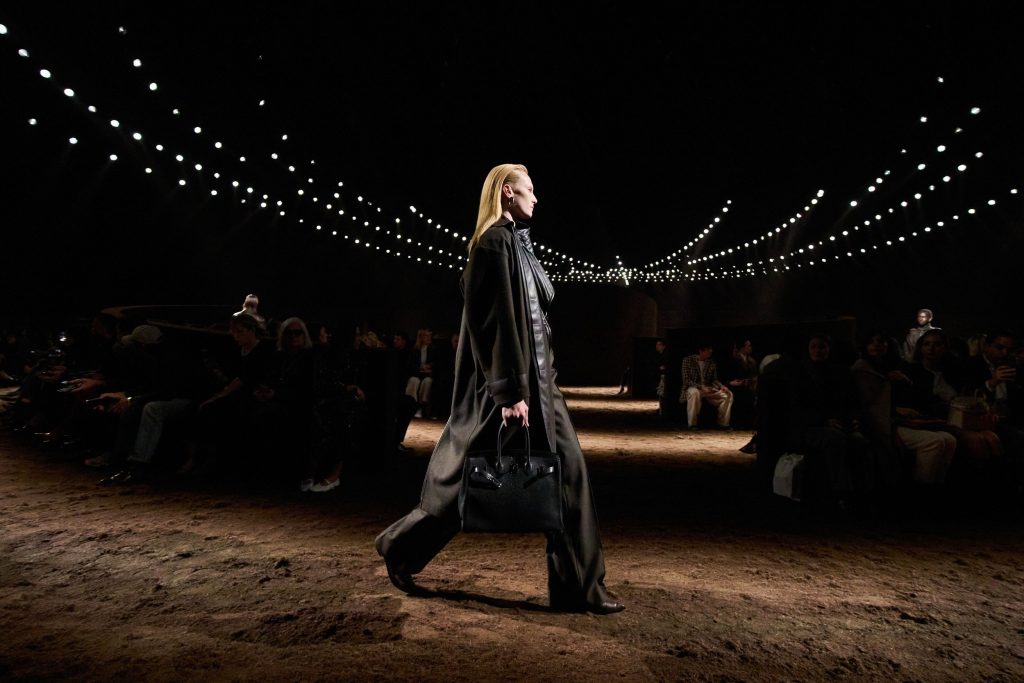Paris, June 1940. As German troops advanced, Elsa Schiaparelli boarded a liner for New York, closing the door on a decade that had re-defined fashion. Her exit felt like a curtain call for elegance itself. Fast-forward to July 7 2025 inside the Petit Palais: Daniel Roseberry resurrects that suspended moment, staging a show he calls “Back to the Future.” His provocation: “Strip these pieces of colour, erase the present—can they still feel born in the future?”
Where Gabrielle Chanel freed bodies with jersey and codified brand “codes,” Elsa changed ideas—asking whether a dress could be art, whether Surrealism could live on a lapel. Roseberry channels both tensions: practicality versus provocation, past versus post-future.
1. Palette, Silhouette, Codes
- Monochrome manifesto – The collection is entirely black-and-white, a fashion world “without screens, AI, or technology—an old world and a post-future one at once.”
- No corsets, new drama – Waists and hips are shaped by hidden interlinings and trompe-l’œil paneling, not boning.
- Codes in disguise – Keyholes, measuring tapes and anatomical references hide inside garments as hand-molded ceramic buttons, a private Surrealist joke for the wearer.
- Textile alchemy – Donegal wool, high-shine satins, Swiss-dot silk foulards and laser-flocked velvets ground the fantasy in atelier rigour.
The result? A time-lapse of the house’s DNA that feels both archival and alien.
3. Look-by-look deep dive
Look 1 — The Palm Dinner Suit
The show opens with a razor-sharp two-piece cut from black dry wool: a tailored jacket and matching pencil skirt. The silhouette is pure 2025—structured shoulders and a wasp-waist—yet every stitch pays homage to Elsa’s 1936 “Dinner Jacket.” Palm-tree motifs, lifted from the archives, are hand-embroidered in silver badla, rhinestones and tone-on-tone sequins, turning the lapels and pockets into shimmering relief sculptures. Topping it off: a black felt hat completely smothered in black pearls, like midnight dew on tropical leaves. Each step reveals black satin slingbacks whose heels are miniature silver hands—an anatomical wink that reminds us Schiaparelli always kept Surrealism tucked under her sleeve.
Look 2 — The Beating-Heart Gown
A single jolt of crimson slices through the monochrome parade: a trompe-l’œil devant-derrière gown in lustrous red satin. Short sleeves and molded bust cups give the dress a sculptural, armour-like quality, while clever pattern-making flips front and back at a glance. Around the model’s throat hangs a mechanical necklace—a human heart cast in red rhinestones that pulses at 60 bpm, resurrecting Salvador Dalí’s 1953 Royal Heart jewel in wearable form. Satin pumps echo the blood-red hue, their ankle straps clasped by tiny silver hands that grip the foot like Surrealist trophies, ensuring every exit is as dramatic as the entrance.
Look 3 — The Dream-of-Venus Harness
Ivory torso armour, negative-space cut-outs and chiffon tiers conjure Dalí’s 1939 Dream of Venus costumes. Where Dalí strung real lobsters, Roseberry suspends obsidian resin crustaceans that dangle over a slick breastplate, their jet bodies echoing the ecological cautionary tale woven through the collection. The look blurs couture, sculpture and performance art in a single step.
Look 4 — The Leopard Face Ensemble
A shaved-velvet coat printed in photo-negative leopard spots pairs with cigarette trousers and a perched toque, nodding to Schiaparelli’s infamous 1939 leopard-face hat. Crafted entirely from cruelty-free flocked velvet, the ensemble flickers from cream to ink under flash, replacing bygone pelts with modern textile wizardry and highlighting the house’s stance on ethical extravagance.
Look 5 — The Eye-of-Time Column
Imagine a tweed sheath stitched with 360 crystal “eyes,” each a tiny clock frozen at 21:00—Elsa’s favourite hour for soirées. Draped in smoke-grey tulle, the dress resurrects Dalí’s 1949 Eye of Time brooch-watch, translating surreal jewellery into textile. As the model turns, the pavé pupils glint like CCTV in a couture surveillance fantasy.
Look 6 — The Matador Tailleur
Midnight satin, bead-encrusted épaulettes and lace-up pedal pushers twist Schiaparelli’s Spring 1940 “Matador” jacket into gender-fluid territory. Roseberry fuses Spanish machismo with Texan bravado—cropped trousers recall rodeo chaps, while the rigour of a bolero jacket is tempered by micro-jet embroidery that scintillates like stadium lights.
Look 7 — The Polka-Heart Shift
A white bouclé column riddled with onyx paillettes the size of vintage coins riffs on Schiaparelli’s 1933 playing-card suit. Up close, each glossy dot hides a laser-etched microscopic heart—an inside joke about digital “likes” in the age of infinite scrolling. It’s playful, graphic and deceptively labour-intensive.
Look 8 — The Apollo of Versailles Cape
A cathedral-length organza cape erupts in a bullion sunburst: horses, clouds and a triumphant Apollo recreated bead-for-bead from the 1938 collaboration between Elsa Schiaparelli and Christian Bérard, then animated with lenticular sequins that flip from pewter to platinum. Ostrich-feather fronds at the hem add a quiver of movement, turning the wearer into a walking constellation.
Look 9 — The Palm-Crest Coat-Dress
Closing the show, a sheer black gazar trench overlays a velvet lapel and cuffs embroidered with silvered palm leaves—an echo of Schiaparelli’s 1937 evening dress. It’s day-into-night dressing before the term existed: translucent layers suggest lingerie peeking through outerwear, while the metallic foliage roots the piece firmly in the house’s botanical, baroque lore.
Together, the nine looks read like annotated footnotes in the Schiaparelli archive—each garment a conversation between Elsa’s original provocation and Roseberry’s futuristic resolve.
4. The Artistry Behind the Illusion
- Lesage & montex: 12 Parisian artisans handled the palm and sunburst embroidery, some stitches dating to 19th-century military techniques.
- Fifty shades of black: Roseberry calibrated five distinct blacks—matte crêpe, velvet, lacquered satin, sheer gazar and patent leather—to read like a monochrome painting under photographer’s strobes.
- Mechanical lewellery: Swiss micro-engineers collaborated on the heartbeat necklace (Look 2), embedding a silent rotor that syncs to 60 bpm.
5. Beauty, casting & atmosphere
Models strode through flood-lit cyclorama rigs that evoked vintage studio flash umbrellas. Slick top-knots, brushed-up baby hairs and patent-vinyl lips amplified the show’s chiaroscuro. A soundtrack of heartbeat basslines crescendoed into flamenco guitar as Cardi B, Dua Lipa and Hunter Schafer applauded from the front row.
6. Why this collection matters
- Archival authenticity without nostalgia – Critics praised Roseberry for quoting the archive “but insisting on now.”
- Sustainability meets spectacle – Faux-fur leopard, recycled Swarovski crystals and solar-powered jewellery mechanisms show couture can dream responsibly.
- Gender fluidity – Matador and Leopard looks blur masculine tailoring and feminine embellishment, expanding Schiaparelli’s client base.
- Commercial hooks – Expect capsule accessories (beating-heart minaudières, Eye-of-Time ear-cuffs) to hit the Place Vendôme salon for red-carpet season.
7. Final thought
With “Back to the Future,” Daniel Roseberry doesn’t merely raid Elsa Schiaparelli’s attic; he performs temporal alchemy, turning museum artifacts into living fashion rites. In doing so, he reminds us that haute couture’s greatest luxury is neither fabric nor jewel, but imagination made tangible—yesterday, today and defiantly tomorrow.
